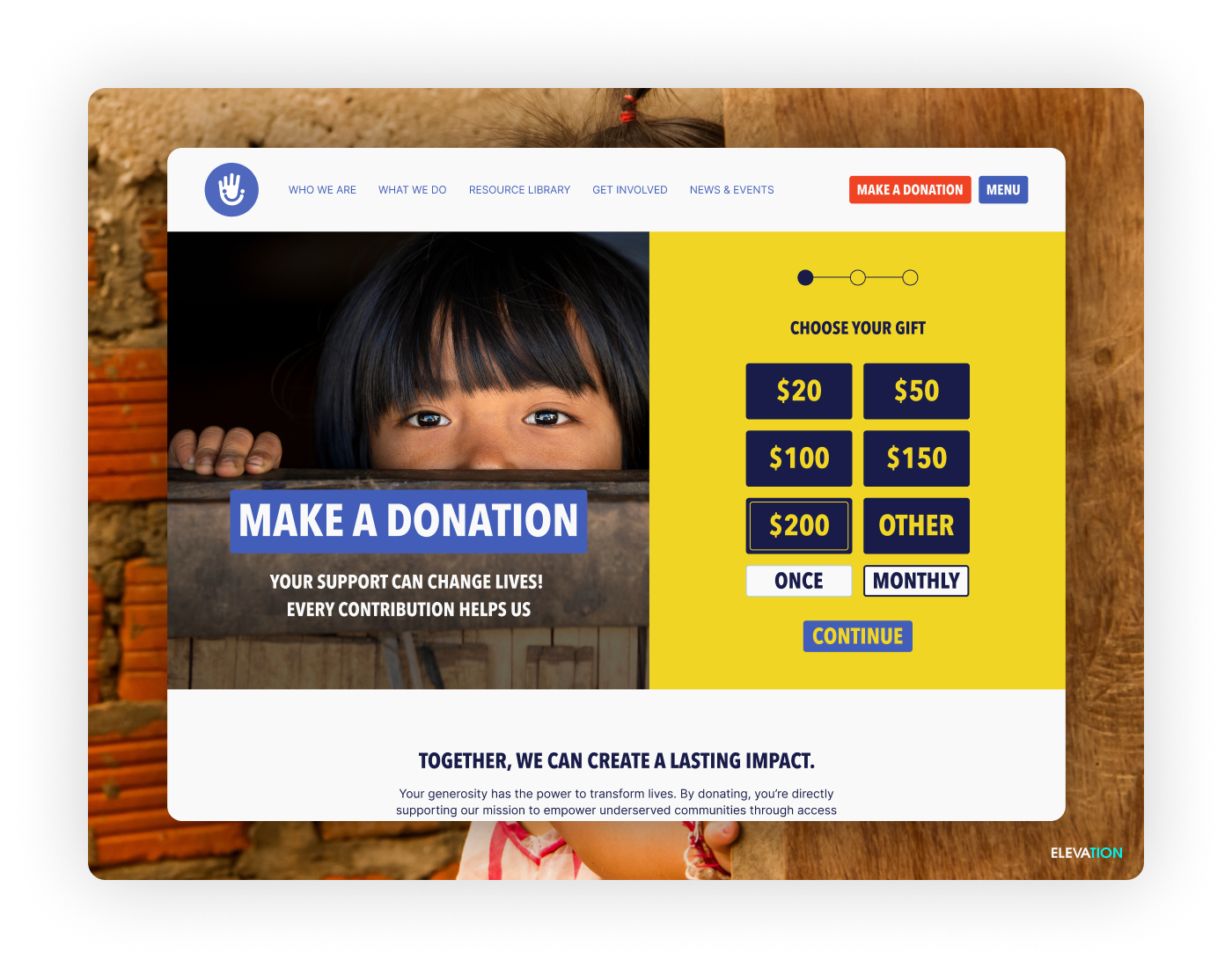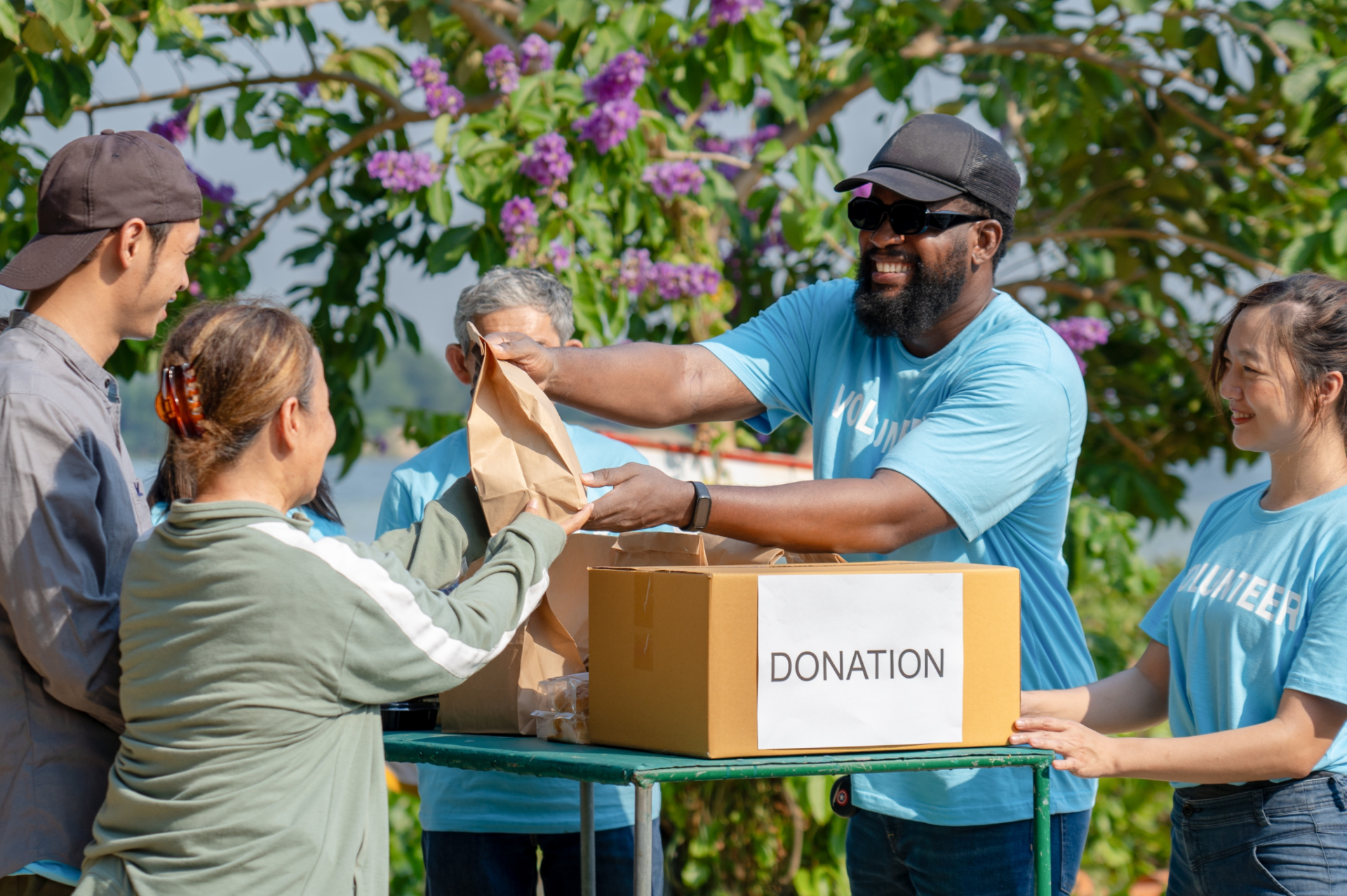These days, it seems like fundraisers are constantly coming up with new strategies to keep up with their donors’ busy lives.
While it’s true that there are more ways than ever to raise money and engage with supporters, you can rest assured that some nonprofit strategies will never get old.
Instead of attempting to reinvent the wheel every time you map out a new stewardship plan, take a look at what tactics have guaranteed success in the past. Then, get creative!
To help you out with that, we’ve put together a list of 5 nonprofit fundraising and engagement tactics that are both innovative and sure to deliver the proven results you need. We’ll show you how to:
- Leverage social media during your peer-to-peer campaign.
- Segment your donor database for personalized outreach
- Embrace mobile fundraising on all fronts
- Add an online component to your fundraising events.
- Make the most of your nonprofit website.
For engagement and retention success in the modern era, you just need to add an innovative twist to a classic fundraising approach. Keep reading to learn how!
1. Leverage Social Media During Your Peer-to-Peer Campaign
If you’re looking for a fundraising tactic that can boost your supporter engagement, increase awareness for your cause, and bring in major fundraising dollars, peer-to-peer is hard to beat.
Peer-to-peer fundraising empowers supporters to raise money on behalf of your nonprofit. With the help of specialized peer-to-peer fundraising software, you can equip fundraisers with tools to set up their own campaign pages and solicit donations from anyone in their networks.
A peer-to-peer fundraiser can be powerful all on its own, but when you pair this tactic with a well-thought-out social media strategy, your fundraising potential will be out of this world!
The good news is that peer-to-peer and social sharing naturally go hand-in-hand. Your fundraisers will likely already be relying on sites like Facebook and Twitter to bring in the bulk of their campaign contributions, but you can make it even easier for them by:
- Providing social media templates so fundraisers can quickly share information about your fundraising campaign or ask for donations on their social profiles. You can even provide marketing materials like images or infographics they can re-post, too.
- Staying active and showing support for fundraisers by updating your own profiles on a regular basis. Keep supporters motivated by posting discussion topics, interacting with followers, and thanking fundraisers who’ve gone above and beyond.
- Offering incentives for sharing content across platforms. For example, everyone who tweets out your campaign hashtag can be entered in an online raffle to win branded merchandise or another fun prize.
Luckily, peer-to-peer fundraising software makes it easier to stay on top of your social media engagement plan. You can schedule automated social posts well in advance so that you have a steady stream of content all throughout your campaign.
That way, you can focus on the more personal aspects of peer-to-peer, like reaching out to congratulate fundraisers who hit their goal or working one-on-one to provide resources for supporters who need a little extra guidance.
Takeaway: Social media can expand your peer-to-peer fundraising reach and provide a platform for you to engage with donors. Lean on you peer-to-peer software’s social sharing tools to make the most of online engagement opportunities.
2. Segment Your Donor Database for Personalized Outreach
Perhaps the most obvious donor engagement strategy is also the most important one—you need to actually get to know your donors!
Thankfully, donor database (or nonprofit CRM) software has made the prospect of getting to know all of your supporters much more feasible. You can create dynamic constituent profiles with all of the details you need to build long-lasting relationships with your donors, from contact information to hobbies, employment history, and more.
However, in order to actually use the data you store, you’ll need to create list segments that correspond to action. Here’s what we mean:
- Segment your list by communication preference to tailor your outreach strategies. Donors are much more likely to respond to an appeal or message that comes in through a channel they’re already using.
- Segment your list by gift size or type so that your fundraising letters are in-line with what a donor is most likely to give. For example, if you know a donor once gave $10, asking them to upgrade to $25 will have a higher success rate than asking for $200.
- Segment your list by supporter type so constituents get messages that are relevant to their preferred engagement style. Examples of supporters in your CRM may include recurring donors, volunteers, members, event/program attendees, or major donors.
Think of it this way: would you rather receive every single communication a nonprofit sends out or a specific set of messages that you’re sure to enjoy? (We think we know the answer!)
Takeaway: Store as much information as you can in your CRM donor profiles. Then, segment your donor list by different fields to create an outreach plan that’s well-suited to each of your supporters.
3. Embrace Mobile Fundraising on All Fronts
Mobile giving is far from new. By now, strategic fundraisers should know that a mobile-friendly fundraising strategy is paramount for engaging not just with young donors, but charitable individuals of all ages and backgrounds.
To develop your mobile strategy, make sure you’re taking a multichannel approach. After all, there are so many ways to go mobile, why choose just one? You can implement any or all of the following methods and more:
- Creating a mobile-optimized donation form is the easiest way to ensure you’re appealing to smartphone donors. Work with your web design team or online fundraising software to build a form that’s usable on all screens with all the features you need.
- Try implementing a text-to-give service so that supporters can make a gift by simply by texting your nonprofit’s unique phone number. You can even set up multiple text giving campaigns so that donors can contribute to a specific fund or project.
- Reach out to all of your mobile supporters via text message marketing. You can send short messages to remind constituents of an ongoing campaign or upcoming event. Just make sure to contact only those supporters who’ve opted in to SMS communications!
The best part of mobile fundraising is that it’s one of the most versatile strategies you can employ. You can pair mobile giving with an existing initiative, such as a crowdfunding or peer-to-peer campaign, or go all out on a dedicated mobile campaign.
Takeaway: Use mobile channels to raise money from donors no matter where they are. Work with nonprofit software that prioritizes mobile fundraising to make sure you’re maximizing your reach and accessibility.
4. Add an Online Component to Your Fundraising Events
The age-old fundraising event is about as classic as fundraising strategies come.
Not only is an event a great way to raise money for virtually any nonprofit, but it’s also a perfect opportunity to connect your team with supporters in person and develop a community around your cause that’s difficult to cultivate solely online.
However, just because fundraising events take place in the real world, that doesn’t mean you can’t them to the next level by combining them with power and reach of online communication.
For example, you could:
- Start an event livestream on your favorite social media platform to loop in supporters who can’t attend.
- Engage with guests and other supporters on social media by posting photos and videos of your event. Don’t forget to create a unique event hashtag to promote the event, too!
- Keep your charity auction event going longer by launching an online auction before or after the event.
- Create a dynamic online event registration page that houses all of the information your guests need to know plus interactive elements like an ecommerce store.
By finding ways to engage donors who aren’t in the room, you’ll expand your event appeal exponentially. When there are no limitations on who can participate in some way in your fundraiser, you’ll raise more money and engage with more people. A win-win!
Takeaway: Use online channels like social media and your event microsite to bring in more supporters to your fundraising event. Don’t forget to advertise your online event components so everyone knows how they can get involved.
5. Make the Most of Your Nonprofit Website
Chances are, a huge percentage of your donors will never visit your nonprofit headquarters, and they may never shake hands with any of your staff, either.
Since so many donors and prospects are interacting with your organization in a purely virtual way, it’s important that you find a way to put your best face forward online. The solution? Let your nonprofit website do the talking!
Your website serves as your organization’s online home base. It’s where your supporters can learn about your mission, get to know your team, view your ongoing campaigns and projects, and then get involved themselves in a number of different ways.
To get the most from this important engagement channel, make sure you include:
- Streamlined design. The last thing your website should do is overwhelm its visitors. Keep your design minimal and clean rather than cramming in unnecessary elements that may distract from your site’s purpose.
- Consistent branding. You want your supporters to feel a sense of familiarity when they visit your site, and a clear visual identity can do the trick. Not only will a strong brand reinforce your site’s security, it will also help build a cohesive image of your organization.
- Opportunities for involvement. To truly engage your visitors, you’ll need to promote plenty of ways for them to do their part. A strategic Ways to Give page can detail all of the different contribution options, from corporate giving to volunteering and much more.
While social media and other channels are great additions to your digital presence, keep in mind that your website is the backbone to any online fundraising and engagement strategies you take on. Because of that, you’ll want to give it the attention it deserves.
Work with an experienced web designer or nonprofit technology consultant who can make sure your website strategy is in top shape. (Not sure if a consultant is right for you? Learn how these experts can help you out by reading DNL OmniMedia’s breakdown of the consulting process.)
Takeaway: Your website can be the best source of information and engagement opportunities for modern donors. Include the right elements on your website and you’re sure to see the results from site visitors!
Though trends come and go, successful donor engagement is always in season.
By using relevant channels, you can ensure all of your supporters are tuned in to your nonprofit’s efforts and excited to contribute to your cause. We can’t wait to see how you make these modern methods your own!
If you have any comments or questions you can reach out to us. We love hearing from you! Also check out our portfolio on Behance and let us know what you think!




